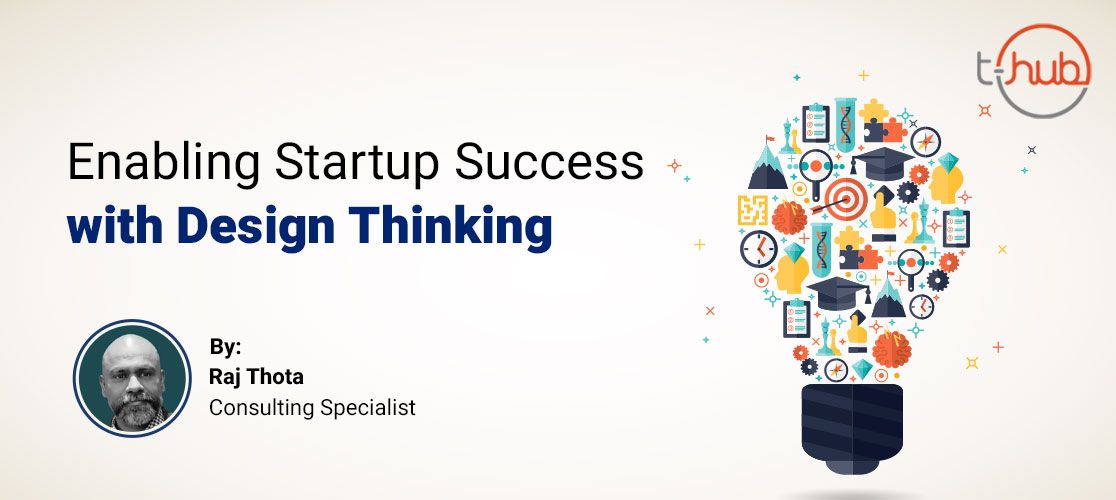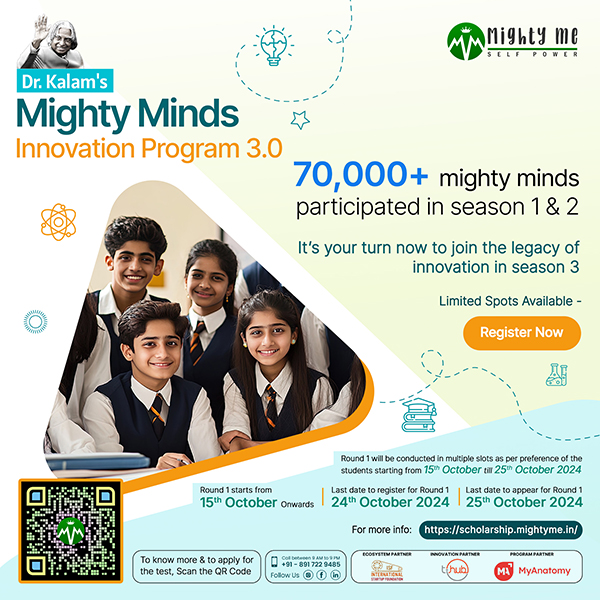A stark and brutal statistic that every founder is aware of is that 90% of startups fail!
According to a study by Failory, a striking 34% of such failures occur due to a lack of product-market fit. Startups often find themselves confronting wicked problems that are like the multi-headed Hydra of Greek mythology – each head represents a different facet of the daunting challenges they need to overcome.
These challenges, though numerous, are not without patterns. Unfortunately, these patterns often become the leading factor for the failure of startups.
The key reasons observed behind the failing startups are as follows:
- Obsession with the ‘Big Idea: startups often find themselves enraptured by their potentially transformative idea to the point where it overshadows other vital aspects, ignoring the actual needs of the customers. This tunnel vision often inhibits a holistic view of their product development journey, thereby steering the startup off course.
- Feature Overload: In their quest to innovate and stand out, startups frequently err on the side of offering too many features, overlooking the core needs of the customer. As a Forbes survey aptly points out, “80% of features in the typical cloud software are rarely or never used,” amounting to a colossal waste of $29.5 billion.
- Prioritising Velocity Over Value: There is an unhealthy practice among startups to fast-track product development at the cost of focusing on solving the right problems. This approach often skips the important steps like empathising, prototyping and testing with real users and might lead to products that fail to resonate with the customer base.
- Not investing enough in experimentation: Failures are part and parcel of the startup journey. However, startups frequently fail to view unsuccessful experiments as opportunities for learning and growth, which ultimately stunts their evolution.
Despite the myriad challenges and an undeniably high failure rate, there is a lifeline in the form of Design Thinking. This powerful framework can be the lighthouse guiding startups through the difficult parts of their initial journey and significantly reducing their failure rates
The Power of Design Thinking

At its core, Design Thinking is a proven problem-solving framework that aids in the resolution of product development challenges by placing customers at the heart of all startup operations. Originating from Stanford’s d.school and popularised by companies such as Ideo, this human-centred, possibility-driven, and iterative problem-solving approach has steadily gained momentum worldwide. A Forbes survey underscores its efficacy with the following statistic: “Design Thinking can deliver an ROI of 85%”.
Design Thinking operates on an iterative cycle comprising five phases –
- Empathise
- Define
- Ideate
- Prototype
- Test
Each stage is designed to focus on the right problems and emphasise identifying the right solutions. By consistently framing and reframing problems through an empathetic lens, startups can maintain a laser focus on addressing the real needs of the customers.
To complement and further strengthen the implementation of Design Thinking, another framework from Google Ventures called “Design Sprints” can be used. It’s like a relay race where the ‘right problems’ identified by the Design Thinking framework can be input into the Design Sprint to implement the ideas. This method offers a structured solution-implementation model, effectively accelerating the startups’ journey toward delivering the right features/value.
When applied together, the Design Thinking Framework and Design Sprints offer startups a proven pathway to increase their odds of success.
The five stages of Design Thinking elucidate how this approach facilitates startup success:
1. Empathise: The first and arguably the most crucial stage, empathy encourages startups to adopt a customer-centric strategy. This strategy involves learning about the deeper needs and issues of customers, as opposed to assuming knowledge of their problems based on superficial observations. Creating empathy maps to collect the required needs, pain points, and insights can provide great ammunition to define the problem supported with data.
- Key Question to reflect on: Has the team captured the real needs of users through empathy mapping?
- Example: UberEATS
2. Define: This stage aids in identifying the scope and underlying aspects of the problem through framing and reframing exercises. Creating user personas, pains, and gains derived from the empathy maps, and regular iterations of problem framing and reframing with empathy can provide a better point of view on the problems that need to be solved.
- Key Question to reflect on: Is the team solving the ‘right’ problems?
- Example: Are you solving the right problem?
3. Ideate: The ideation stage encourages the co-creation of ideas with customers and cross-functional teams. It is important to remember that while a plethora of ideas can be overwhelming, having a capable coach to guide the team can prevent the process from descending into chaos.
- Key Question to reflect on: Is the team generating enough ideas and managing the ideation process effectively
- Example: Experiments at Airbnb
4. Prototype: ‘One Prototype is worth 1000 meetings’- Ideo. The prototype stage is instrumental in mitigating risks associated with the product strategy. The focus here is on developing minimal viable products (MVPs), which are then tested with real users. Failing cheaper and faster should become the mantra for startups to address any issues very early before they get into the market.
- Key Question to reflect on: Does the prototype provide the right feedback and insights in terms of desirability, feasibility, and viability?
- Example: How Dropbox Started as a Minimal Viable Product
5. Test: This stage involves real-life testing with actual customers to garner maximum feedback before the product’s launch. This feedback can be used to refine the product, increasing the chances of a successful launch.
- Key Question to reflect on: Is the testing sample good enough to gain the necessary insights?
- Example: 3 Powerful Examples of Design Thinking in Startups in Action
Adopt proven practices from Design Thinking and Design Sprints to address failure patterns
1. Make empathy a highly visible metric
Unless empathy is a measure that is highly visible right at the top leadership teams, it will become difficult for startups to deliver the right value to the customer. This metric helps to instil a strong customer-centricity among the teams and helps address any challenges in delivering customer-centric value.
2. Embed Design-led product development practices
Embedding design thinking practices as one of the core skills across teams can help teams continuously empathise with their end users and filter the unwanted features.
Design-led firms consciously put the customer first, with 46% of design leaders citing an emotional bond with customers as a defining characteristic of an advanced design practice.
3. Run Design Sprints to enable high-impact business ideas ready for solution development
Design Sprint is a proven 5 days sprint framework from Google Ventures. Running Design Sprints on identified opportunities/problems will help build the prototype faster to find the sweet spot between Desirability, Feasibility, and Viability. These sprints help pre-validate the solutions with rapid prototypes before they are released into the market. The insights/ideas gained from these sprints can become a valuable product backlog. This helps the startups to fail faster to learn faster and improve continuously.
4. Define and follow a simple process that guides the product development journey
The ‘process’ that supports product development cannot be an afterthought. One can’t start their car and realise they don’t have the right infrastructure to drive it to their destination. A proven approach is to adopt the key practices from Design Thinking and Design Sprints and, if required, integrate them with their agile ways of working. Design Thinking can help identify the right problems to solve, and Design Sprint can provide the right structure, with guard rails, to implement solutions faster.
5. Improve continuously
Relentless improvement is a hallmark of every successful startup. This is very important, especially for startups, as they have to fight the many odds of failure. Converting failure into feedback and building data to create experimentation frameworks can help startups to experiment and release the right features.

To summarise, startups have to plan how they can move from a traditional solution-first approach to a design-led innovation approach.
Here is a starter set of questions to prompt the design thinking journey for startups:
- Is empathy part of the problem-solving toolkit?
- Is the team solving the ‘right problems’ continuously?
- Are the problem statements framed & reframed by empathising with the users continuously? Is it supported by the data?
- Does the entire team understand the design-led innovation process?
- Does the company have a simple but right process to build the product? Is it measured?
- Is the process of ideation a managed process or just a creative outburst? How is it measured?
- What is the process for prototyping and testing? Do you have enough data to gain insights into the customer journeys?
- Does the startup create a safe environment to fail fast?
- Who on the team is responsible for asking these questions? And, if needed, run the initiatives to implement these ideas.
- Are the teams trained in implementing Design Thinking? Do they have access to a Design Thinking coach?
In conclusion, by adopting the best practices from Design Thinking and Design Sprints, startups can significantly improve their chances of success and address failure patterns. Through empathetic understanding, iterative problem definition, ideation, prototyping, and real-world testing, startups can effectively navigate the difficult journey in the early years
References:
- https://www.failory.com/blog/startup-failure-rate
- https://www.forbes.com/sites/deniselyohn/2019/05/01/why-startups-fail/?sh=10f4e54728a5
- https://www.forbes.com/sites/tomtaulli/2019/02/24/are-most-of-your-products-features-useless/?sh=45b633204459
- https://medium.com/uber-design/how-we-design-on-the-ubereats-team-ff7c41fffb76
- https://hbr.org/2012/09/are-you-solving-the-right-problem
- https://medium.com/airbnb-engineering/experiments-at-airbnb-e2db3abf39e7#.miqyczkzb
- https://techcrunch.com/2011/10/19/dropbox-minimal-viable-product/
- https://www.ilab.ceu.edu/articles/3-powerful-examples-of-design-thinking-in-startups-in-action
- https://landing.adobe.com/en/na/products/marketing-cloud/350450-forrester-design-led-business.html
- https://www.mckinsey.com/capabilities/mckinsey-design/our-insights/the-business-value-of-design
- http://www.gv.com/sprint/
About the Author
Raj Thota is a consulting specialist with more than two decades of work experience globally. He is currently mentoring startups at Stanford SEED. Earlier to this, he was heading global consulting teams and consulting CXOs on designing and developing products, operating models, and transformation roadmaps.
Raj is also the founder and chief mentor of ‘Ideaum’, a specialised consulting & training firm to solve business problems through empathy by leveraging Design Thinking and Visual Problem Solving frameworks. He is regularly invited to conduct workshops/speaking sessions at various international forums and B-Schools like ISB, IIMs, etc.
A stark and brutal statistic that every founder is aware of is that 90% of startups fail and the biggest reason is – Design Thinking.
According to a study by Failory, a striking 34% of startup failures occur due to a lack of product-market fit. Startups often find themselves confronting wicked problems that are like the multi-headed Hydra of Greek mythology – each head represents a different facet of the daunting challenges they need to overcome.
These challenges, though numerous, are not without patterns. Unfortunately, these patterns often become the leading factor for the failure of startups.
The key reasons observed behind the failing startups are as follows:
- Obsession with the ‘Big Idea: startups often find themselves enraptured by their potentially transformative idea to the point where it overshadows other vital aspects, ignoring the actual needs of the customers. This tunnel vision often inhibits a holistic view of their product development journey, thereby steering the startup off course.
- Feature Overload: In their quest to innovate and stand out, startups frequently err on the side of offering too many features, overlooking the core needs of the customer. As a Forbes survey aptly points out, “80% of features in the typical cloud software are rarely or never used,” amounting to a colossal waste of $29.5 billion.
- Prioritising Velocity Over Value: There is an unhealthy practice among startups to fast-track product development at the cost of focusing on solving the right problems. This approach often skips the important steps like empathising, prototyping and testing with real users and might lead to products that fail to resonate with the customer base.
- Not investing enough in experimentation: Failures are part and parcel of the startup journey. However, startups frequently fail to view unsuccessful experiments as opportunities for learning and growth, which ultimately stunts their evolution.
Despite the myriad challenges and an undeniably high failure rate, there is a lifeline in the form of Design Thinking. This powerful framework can be the lighthouse guiding startups through the difficult parts of their initial journey and significantly reducing their failure rates.
The Power of Design Thinking
At its core, Design Thinking is a proven problem-solving framework that aids in the resolution of product development challenges by placing customers at the heart of all startup operations.
Originating from Stanford’s school and popularised by companies such as Ideo, this human-centred, possibility-driven, and iterative problem-solving approach has steadily gained momentum worldwide. A Forbes survey underscores its efficacy with the following statistic: “Design Thinking can deliver an ROI of 85%”.
Design Thinking operates on an iterative cycle comprising five phases –
- Empathise
- Define
- Ideate
- Prototype
- Test
Each stage is designed to focus on the right problems and emphasise identifying the right solutions. By consistently framing and reframing problems through an empathetic lens, startups can maintain a laser focus on addressing the real needs of the customers.
To complement and further strengthen the implementation of Design Thinking, another framework from Google Ventures called “Design Sprints” can be used. It’s like a relay race where the ‘right problems’ identified by the Design Thinking framework can be input into the Design Sprint to implement the ideas. This method offers a structured solution-implementation model, effectively accelerating the startups’ journey toward delivering the right features/value.
When applied together, the Design Thinking Framework and Design Sprints offer startups a proven pathway to increase their odds of success.
The five stages of Design Thinking elucidate how this approach facilitates startup success:
- Empathise: The first and arguably the most crucial stage, empathy encourages startups to adopt a customer-centric strategy. This strategy involves learning about the deeper needs and issues of customers, as opposed to assuming knowledge of their problems based on superficial observations. Creating empathy maps to collect the required needs, pain points, and insights can provide great ammunition to define the problem supported with data.
- Key Question to reflect on: Has the team captured the real needs of users through empathy mapping?
- Example: UberEATS
- Define: This stage aids in identifying the scope and underlying aspects of the problem through framing and reframing exercises. Creating user personas, pains, and gains derived from the empathy maps, and regular iterations of problem framing and reframing with empathy can provide a better point of view on the problems that need to be solved.
- Key Question to reflect on: Is the team solving the ‘right’ problems?
- Example: Are you solving the right problem?
- Ideate: The ideation stage encourages the co-creation of ideas with customers and cross-functional teams. It is important to remember that while a plethora of ideas can be overwhelming, having a capable coach to guide the team can prevent the process from descending into chaos.
- Key Question to reflect on: Is the team generating enough ideas and managing the ideation process effectively
- Example: Experiments at Airbnb
- Prototype: ‘One Prototype is worth 1000 meetings’- Ideo. The prototype stage is instrumental in mitigating risks associated with the product strategy. The focus here is on developing minimal viable products (MVPs), which are then tested with real users. Failing cheaper and faster should become the mantra for startups to address any issues very early before they get into the market.
- Key Question to reflect on: Does the prototype provide the right feedback and insights in terms of desirability, feasibility, and viability?
- Example: How Dropbox Started as a Minimal Viable Product
- Test: This stage involves real-life testing with actual customers to garner maximum feedback before the product’s launch. This feedback can be used to refine the product, increasing the chances of a successful launch.
- Key Question to reflect on: Is the testing sample good enough to gain the necessary insights?
- Example: 3 Powerful Examples of Design Thinking in Startups in Action
Adopt proven practices from Design Thinking and Design Sprints to address failure patterns
- Make empathy a highly visible metric
Unless empathy is a measure that is highly visible right at the top leadership teams, it will become difficult for startups to deliver the right value to the customer. This metric helps to instil a strong customer-centricity among the teams and helps address any challenges in delivering customer-centric value.
- Embed Design-led product development practices
Embedding design thinking practices as one of the core skills across teams can help teams continuously empathise with their end users and filter the unwanted features.
Design-led firms consciously put the customer first, with 46% of design leaders citing an emotional bond with customers as a defining characteristic of an advanced design practice.
- Run Design Sprints to enable high-impact business ideas ready for solution development
Design Sprint is a proven 5 days sprint framework from Google Ventures. Running Design Sprints on identified opportunities/problems will help build the prototype faster to find the sweet spot between Desirability, Feasibility, and Viability. These sprints help pre-validate the solutions with rapid prototypes before they are released into the market. The insights/ideas gained from these sprints can become a valuable product backlog. This helps the startups to fail faster to learn faster and improve continuously.
- Define and follow a simple process that guides the product development journey
The ‘process’ that supports product development cannot be an afterthought. One can’t start their car and realise they don’t have the right infrastructure to drive it to their destination. A proven approach is to adopt the key practices from Design Thinking and Design Sprints and, if required, integrate them with their agile ways of working. Design Thinking can help identify the right problems to solve, and Design Sprint can provide the right structure, with guard rails, to implement solutions faster.
- Improve continuously
Relentless improvement is a hallmark of every successful startup. This is very important, especially for startups, as they have to fight the many odds of failure. Converting failure into feedback and building data to create experimentation frameworks can help startups to experiment and release the right features.
To summarise, startups have to plan how they can move from a traditional solution-first approach to a design-led innovation approach.
Here is a starter set of questions to prompt the design thinking journey for startups:
- Is empathy part of the problem-solving toolkit?
- Is the team solving the ‘right problems’ continuously?
- Are the problem statements framed & reframed by empathising with the users continuously? Is it supported by the data?
- Does the entire team understand the design-led innovation process?
- Does the company have a simple but right process to build the product? Is it measured?
- Is the process of ideation a managed process or just a creative outburst? How is it measured?
- What is the process for prototyping and testing? Do you have enough data to gain insights into the customer journeys?
- Does the startup create a safe environment to fail fast?
- Who on the team is responsible for asking these questions? And, if needed, run the initiatives to implement these ideas.
- Are the teams trained in implementing Design Thinking? Do they have access to a Design Thinking coach?
In conclusion, by adopting the best practices from Design Thinking and Design Sprints, startups can significantly improve their chances of success and address failure patterns. Through empathetic understanding, iterative problem definition, ideation, prototyping, and real-world testing, startups can effectively navigate the difficult journey in the early years







